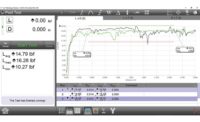But the QA department had not seen similar benefits from the system, which was provided by global alliance partners Hewlett-Packard Co. (Palo Alto, CA) and SAP AG (Walldorf, Germany). Instead, Advanced Energy's QA users had continued using familiar, but cumbersome, manual methods to acquire the quality-related data they needed to prepare weekly and monthly reports to document Advanced Energy's ISO and other QA requirements.
Advanced Energy is a provider of power conversion and control equipment, flow and thermal management systems, plasma and ion source systems and other equipment used in the manufacture of semiconductors, data storage products, flat panel displays and other advanced products. In this business, quick access to quality reporting data-such as defect counts and parts per million yields -- is crucial to meeting ongoing customer requirements and ISO standards.
Consequently, Advanced Energy's QA team was looking into various improvements that would save data retrieval time and manual labor. QA users were anxious to cut loose from some 15 to 20 hours of data collection and formatting time needed for each of about 25 monthly reports that the department prepares for the company's top management and suppliers.
QA users got their opportunity in early 2002, when Advanced Energy's IT group launched a major update to its SAP/HP system that incorporated the SAP Business Warehouse (BW), a data warehousing system. The QA department stepped up to become the first internal user of the system.
From IT's perspective, QA was an ideal environment for rolling out BW because its users dealt with historical data, as opposed to manufacturing or inventory handling groups trading in faster-changing, real-time data. From QA's perspective, BW couldn't help but improve data access and quality.
"Before BW, we stretched our SQL [Structured Query Language] server and several company databases just to retrieve the QA data we needed," notes Manuel Olivas, senior supplier quality engineer at Advanced Energy. "We typically received the data in several different formats, which required a quality engineer to spend two hours per week manually formatting the data to produce a readable report. Now we get the data we need in five to ten minutes, and we don't have to go everywhere on the system to get the job done."
With all of the data in the common, centralized BW data source, QA users are also able to perform more flexible, analytic reporting. For example, users can customize their queries using different fields, such as part number prefixes or defect notifications, and generate similar reports based on different fields of interest.
An additional benefit is that the quality of the reports themselves is also improved, says Paula Rice, Advanced Energy IT applications manager. "When we ran the old and new systems in parallel," Rice reports, "we found that BW often yielded more accurate data sets."
Hewlett-Packard Co.
(800) 752-0900 Reply 12
www.hp.comSAP America
(888)-727-1993 Reply 13
www.sap.com/usa
HP/SAP Global Alliance
+49 6227 357103
(Walldorf, Germany)
www.hp.com/go/sap
BENEFITS
- The common, centralized data repository enables the QA department to save significant time and labor in preparing reports for top management and suppliers.
- The system gives QA users increased flexibility to customize reports through specialized queries and the addition of appropriate filters.
- Data sets are more accurate than with the old approach.
